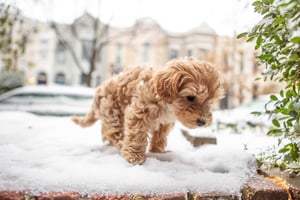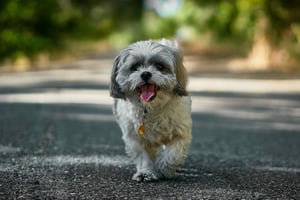Reverse sneezing is a common condition in dogs, but it can be quite alarming for pet owners....
How to Stop a Dog from Reverse Sneezing
Reverse sneezing is a common occurrence in dogs and can be very alarming for pet owners. It is a spasm-like condition that can cause a dog to make loud, repetitive sneezing noises. Fortunately, there are ways to stop a dog from reverse sneezing and prevent it from happening again. This article will explain the causes of reverse sneezing, how to stop it, and how to prevent it from happening in the future.
What is Reverse Sneezing in Dogs?
Reverse sneezing is a common condition in dogs and is characterized by a loud inhalation through the nose that is followed by a rapid, repeated sneezing sound. This condition is also known as pharyngeal gag reflex, inspiratory paroxysmal respiration, and backward sneezing. It is most commonly seen in small or brachycephalic breeds, such as the Pekingese, Chihuahua, Pomeranian, and Pug.
Reverse sneezing is not a serious condition and is usually not cause for concern. However, it can be very alarming for pet owners who are not familiar with the condition. It is important to understand what is happening and how to stop a dog from reverse sneezing so that you can provide your pet with the best care.
What Causes Reverse Sneezing in Dogs?
Reverse sneezing is caused by irritation of the throat and soft palate. This irritation can be caused by anything from allergies and infections to foreign objects in the throat. It can also be triggered by excitement, exercise, eating too quickly, or drinking cold water.
Allergies are the most common cause of reverse sneezing in dogs. Allergens such as pollen, dust, and mold can cause irritation in the throat and lead to reverse sneezing. It is important to identify the allergen so that you can take steps to minimize your pet’s exposure and keep them comfortable.
Infections can also cause reverse sneezing in dogs. Infections of the throat, nose, and sinuses can cause irritation and lead to reverse sneezing. It is important to identify the cause of the infection and treat it with the appropriate medications.
Foreign objects in the throat can also cause reverse sneezing. Small items such as toys, pieces of food, or even grass can become lodged in the throat and irritate the soft palate, leading to reverse sneezing.
How to Stop a Dog from Reverse Sneezing
If your dog is reverse sneezing, there are a few things you can do to help stop it. It is important to remain calm and not panic as this can cause your dog to become more agitated.
- Gently massage your dog’s throat – Gently massaging the throat can help to relieve the irritation and stop the reverse sneezing.
- Close your dog’s nostrils – Closing your dog’s nostrils can help to stop the reverse sneezing as it will reduce the amount of air that is entering the throat.
- Distract your dog – Distracting your dog can help to break the cycle of reverse sneezing. Try giving them a treat or playing with a toy.
- Take your dog outside – Taking your dog outside for some fresh air can help to clear the throat and stop the reverse sneezing.
If your dog’s reverse sneezing persists, it is important to seek veterinary care. Your veterinarian can help to identify the underlying cause and provide treatment to help relieve your dog’s symptoms.
How to Prevent Reverse Sneezing in Dogs
The best way to prevent reverse sneezing in dogs is to identify and address the underlying cause. If your dog has allergies, it is important to identify the allergen and take steps to minimize their exposure. If they have an infection, it is important to seek veterinary care and treat the infection with the appropriate medications. If foreign objects are the cause, it is important to keep your dog’s environment free of small items that can become lodged in their throat.
It is also important to keep your dog’s throat and nose clear. Regular brushing of your dog’s teeth can help to keep their throat and nose clear and reduce the risk of reverse sneezing. Additionally, feeding your dog smaller meals more frequently can help to prevent them from eating too quickly and reduce the risk of reverse sneezing.
Conclusion
Reverse sneezing can be a frightening experience for pet owners, but it is usually not a serious condition. If your dog is reverse sneezing, there are several things you can do to help stop it. It is also important to identify and address the underlying cause to prevent it from happening in the future. With the right care, you can help keep your dog comfortable and reduce the risk of reverse sneezing.



